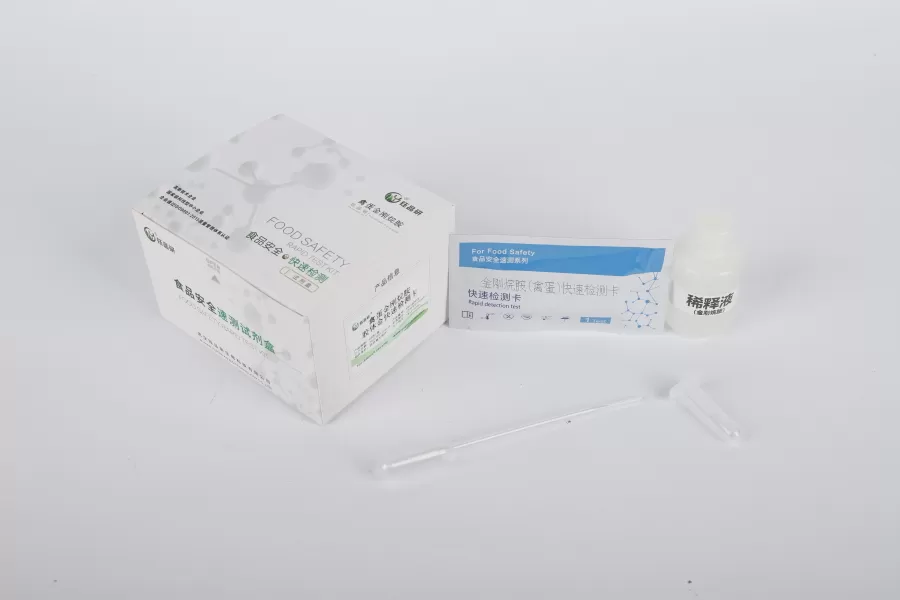Traditional methods for detecting antibiotic residues in poultry eggs rely on large-scale laboratory instruments (such as high-performance liquid chromatography, mass spectrometry, etc.), which have limitations such as long detection cycle (usually 24-48 hours), complicated operation (requiring professional personnel, cumbersome pre-processing), and high equipment costs (difficult to popularize to small and medium-sized enterprises and grassroots supervision scenarios), making it difficult to meet the needs of rapid screening and batch testing under the new standard. The rapid detection solution integrates colloidal gold immunochromatography, LAMP isothermal amplification, fluorescent quantitative PCR and other technologies to achieve the optimization of the whole process from sample pretreatment to result interpretation: sample pretreatment only requires simple extraction (such as buffer oscillation extraction), without complex purification steps; the detection process can be completed within 30 minutes, and some test strip products can even achieve results in 10 minutes; at the same time, the device is portable, handheld reader or test strip can be read by the naked eye, suitable for enterprise self-inspection, market supervision, e-commerce platform warehousing and other scenarios.
This scheme strictly targets the new standard 2025. By optimizing the specificity of antibodies and the stability of detection reagents, it realizes the simultaneous detection of residues of 12 common antibiotics such as enrofloxacin, ciprofloxacin, and chloramphenicol. The detection limit can reach 0.1-1 μg/kg, which meets the precise screening requirements of the "maximum residue limit" in the new standard. For example, the rapid detection test strip using colloidal gold immunochromatography technology uses the principle of specific binding of antigens and antibodies to intuitively judge the residue situation by the presence or depth of the color-developing band; the detection card combined with LAMP technology amplifies the detection ability of low-concentration residues through fluorescent signal amplification. In addition, the data analytics software supporting the plan can be connected to the supervision platform to realize real-time upload and traceability of detection data, providing data support for egg quality and safety supervision.

in practical applications, the rapid detection program for antibiotic residues in poultry eggs has been implemented in many large breeding enterprises, food processing plants and regulatory authorities. By sampling raw eggs every day, enterprises can detect and eliminate unqualified products in time, reduce recalls and economic losses caused by excessive residues; regulators use this program to achieve rapid screening of poultry eggs in the market, effectively curbing the flow of illegal products into the table. For consumers, more reliable detection technology means that they can buy "rest assured eggs", further enhancing their sense of safety in diet.
With the full implementation of the 2025 new standard, the poultry egg industry is ushering in a transformation from "retrospective" to "whole-process prevention and control". The rapid detection scheme for antibiotic residues in poultry eggs is not only a technical innovation, but also an important tool to promote the standardization and standardization of the industry. In the future, with the continuous iteration of detection technology (such as miniaturized detection chips, AI-assisted interpretation, etc.), the quality and safety of poultry eggs will be more firmly guaranteed, contributing to the construction of a full-chain food safety system "from farm to table".

